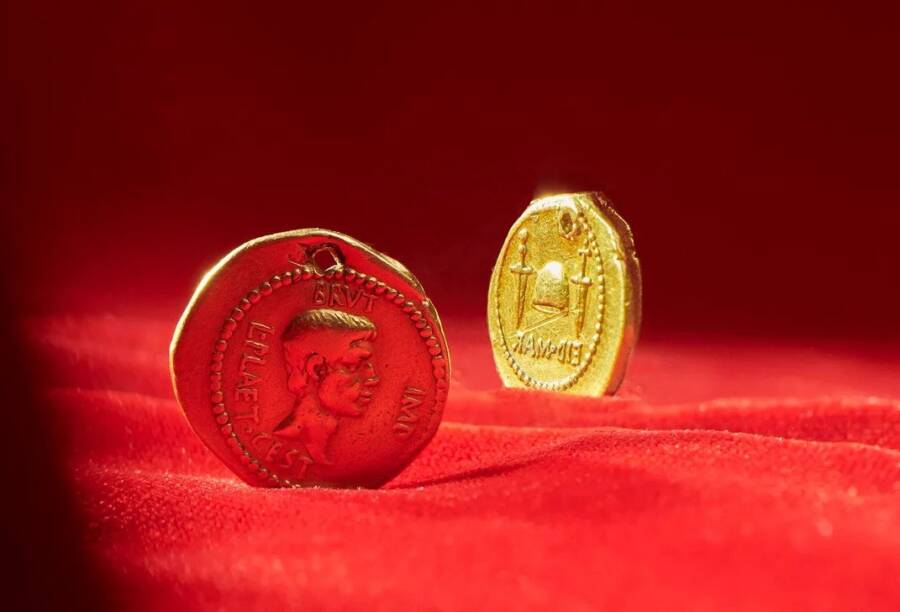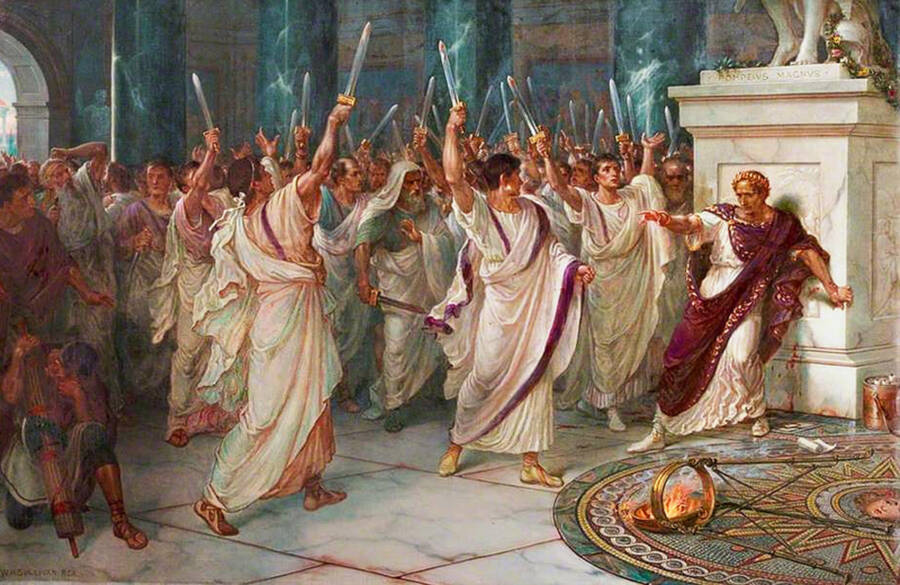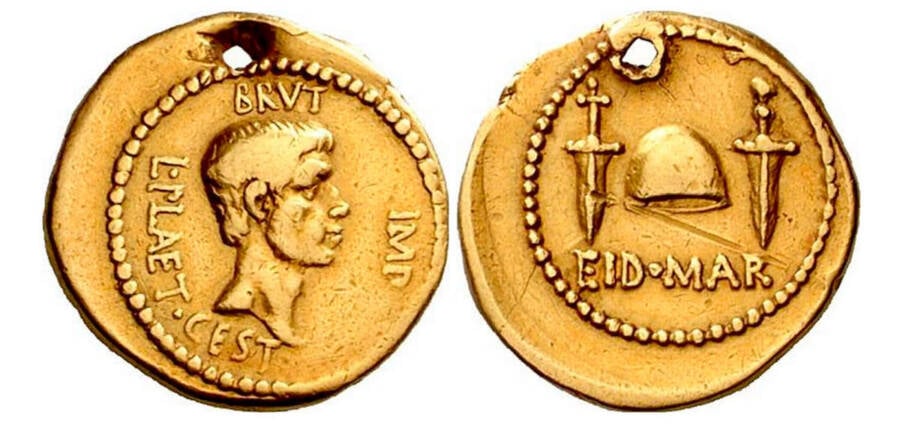The 2,000-year-old gold coin is one of just three known to exist.

Courtesy of Numismatica Ars ClassicaThe coin features an image of Caesar’s assassin Marcus Junius Brutus on one side.
After leading a group of Roman senators to assassinate Julius Caesar on March 15, 44 B.C.E., Marcus Junius Brutus minted a coin to mark the occasion. Now, one of these coins is set to be auctioned off by Numismatica Ars Classica, who expects it will attract bids in the millions of dollars.
“It’s priceless, but it still has a price tag,” Arturo Russo, the managing director of the auction house Numismatica Ars Classica, told Bloomberg. “To have a coin that commemorates such a well-known event, such a famous event, an event that has changed completely the course of history is quite extraordinary.”
The 2,000-year-old coin, called the Eid Mar or Ides of March coin, depicts significant motifs on each side. One side bears the face of Caesar’s assassin, Brutus, with the inscription “BRVT IMP” or Brutus, Imperator. The other side displays two daggers, a liberty cap, and the inscription “EID MAR” short for Eidibus Martiis, or Ides of March.
Minted by Brutus himself following Caesar’s assassination, the coin also has a hole pierced in the top. Russo speculated that a supporter of Brutus, or even one of his co-conspirators, might have worn it around their neck.
“The speculation that the coin was pierced to be worn by one of the close allies of Brutus adds further fascination,” he explained to Barrons.
He added: “In an era when communication through the media was virtually nonexistent, coins were the most important means of political propaganda and this coin is an excellent example of it.”

Public DomainA 19th-century depiction of Caesar’s assassination.
Though Julius Caesar was popular with the people of Rome and had succeeded in expanding the Roman Republic, many Roman senators disliked and distrusted him. Fearing that Caesar would declare himself king — he was already the “dictator in perpetuity” — they plotted his death.
On March 15, 44 B.C.E., a group of 60 Roman senators led by Brutus and Gaius Cassius Longinus stabbed Caesar to death at a meeting of the Senate in Rome. Shortly afterward, Brutus fled to Greece and had the silver and gold coins created by a mobile military mint to mark the assassination.
But Caesar’s death did not restore the Roman Republic as the senators had hoped. Instead, Caesar’s successor, Octavian, made it his personal goal to hunt down and kill his great-uncle’s assassins. Brutus himself died of suicide in 42 B.C.E., after losing a battle to Octavian and Caesar’s ally Mark Antony.
Then, most of Brutus’ silver and gold coins commemorating Caesar’s assassination were melted down. To date, just three gold coins like the one going up for auction are known to exist — one is held by Germany’s Deutsche Bundesbank and the other sold for $3.5 million in 2020. Sixty silver coins have also been found.
“It’s something absolutely astonishing to know that this coin has survived,” Russo told Bloomberg.

Courtesy of Numismatica Ars ClassicaThe coin features motifs from Caesar’s assassination as well as a hole pierced in the top that suggests someone wore it around their neck.
The coin passed out of the public eye for centuries before reappearing in 1932. Then, it was offered to the British Museum by Oscar Ravel, a scholar of Greek numismatics (ancient coins, tokens, medals, and paper money). But the British Museum didn’t have the funds to purchase it.
However, the British Museum did secure the coin on loan in 2010. For over a decade, the museum displayed the coin on a long-term loan from a private collector. Now, the coin is set to go up for auction.
Russo expects that it will fetch up to $2 million dollars.
“The murder of Julius Caesar is one of the most famous historical events of history and this coin witnesses it in a very powerful way,” Russo told Barrons. He added: “It could be appealing not only to coin collectors but to history and art lovers in general and to major institutions around the world.”
The auction for the coin will take place online and in-person — at Zurich’s Hotel Baur au Lac — on May 30, 2022.